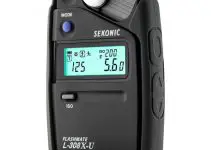There is a slew of factors you need to consider when choosing the right cinema lens for your next film project. Depending on what piece of glass you tend to use, the visual aesthetics of your film could be drastically affected by factors such as the level of lens flares present, overall image sharpness, distortion and focal length, the shape of the bokeh, parfocality of the lens, and the list goes on.
To put things into perspective, Greg from camera rental company LensProToGo provides a comprehensive guide regarding all details you’ll have to keep in mind when picking out the right cinema lens for your next shoot.
First and foremost, pay close attention to the amount of distortion produced by each lens, in addition to its focal length. Odds are, you’ll need to use different focal lengths for different types of situations. Considering that different lenses vary in terms of the amount of distortion, note that wider lenses do produce more distortion although some lenses may be more extreme than others.
Another aspect of a lens you need to watch out for is the amount of flaring produced. The construction of the lens, glass elements, and optical coatings change the way light bounces within the lens, thereby affecting the appearance and amount of lens flares in your footage.
For sci-fi and grand sale projects, lenses that produce in-your-face anamorphic-style flares are perfect. Meanwhile, for more down-to-earth pieces such as documentaries, interviews, or nature film projects, having lenses with minimal flaring would be a better fit.
Just like flaring, the sharpness and shape of the produced bokeh are also depended on many factors of the lens. For example, anamorphic lenses will produce more oval-shaped bokeh while standard spherical lenses will give you a circular, more natural flare.
The bokeh effect is also largely affected by the number of aperture blades inside of the lens. The more blades there are, the more spherical the bokeh appears. On the other hand, the fewer aperture blades, the more hexagonal and defined the edges of the final result will be.
Different lenses also produce varying degrees of image sharpness. If you’re shooting a vintage piece, you may consider using an older lens which has a softer focus, reminiscent of such time period. Meanwhile, for more corporate or modern-style productions, a unit that is as sharp as possible would be more preferable.
If you’re planning on using a zoom lens, you’ll also want to ensure that your lens is par-focal. This means that no matter what focal distance you’re shooting at, the focus will remain the same, allowing you to set focus once and zoom in and out seamlessly while shooting.
Last but not least, it’s highly recommended to pick lenses that are preferably in a set with the same brand and lens models. That way, you’ll end up with a consistent build for the lenses in your kit in terms of size and weight, ensuring that when you have to swap lenses, each unit will be compatible with the rig you currently have. Using multiple lenses from different product lines will cause you to have to readjust filters and camera configurations, wasting precious time in production.
What are your personal recommendations when choosing a cine lens? Let us know in the comments below.
[source: LensProToGo]
Disclaimer: As an Amazon Associate partner and participant in B&H and Adorama Affiliate programmes, we earn a small comission from each purchase made through the affiliate links listed above at no additional cost to you.



